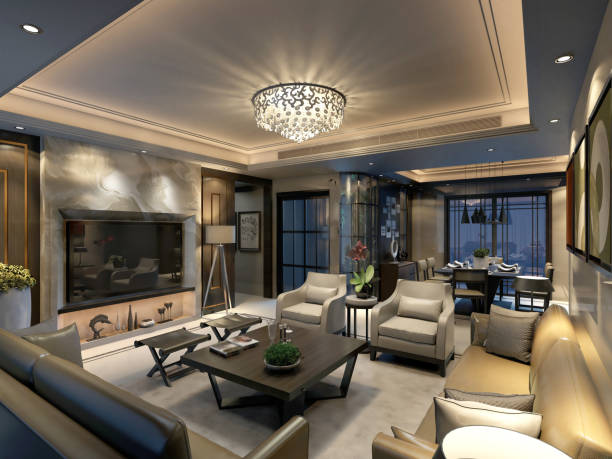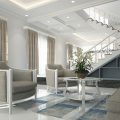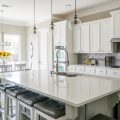You’ve come to the right place if you’d like to know how to style your home like an interior designer. There are some simple tips to help you design each room to your liking. First, you must brainstorm ideas. Creating mood boards with images of different colors can help you develop themes for each room. Using websites and magazines can also be a great source of inspiration. A rug can bring an elegant touch to any room.
Creating a color personality
If you want your interiors to tell a story, you need to learn about color psychology and how it affects the human psyche. An interior designer is an excellent resource for this and can help you pick the right colors for each room in your home. Here are some tips for choosing the right colors:
Consider a client’s personality and the brand it represents. Color can dramatically impact how a brand is perceived by its customers. Brands have distinct personalities, and choosing specific colors will give your space personality. The chart above details five different dimensions of brand personality. This information can help you select wallpaper colors to reflect your brand’s personality. For example, a lively brand would choose creative and fun wallpaper colors. If your clients are more reserved, use neutral colors for the walls.
Choosing a range of colors
When it comes to interior design, a good tip for selecting colors is to know the psychology of each color. While your favorite hue may look stunning on a small item, it can be overwhelming on a large surface. Choose shades that complement each other to avoid the look of chaos. To help you choose the right hue for your space, read about the color wheel and its meaning.
Color psychology is essential in interior design because different shades of color affect the human mind. Different shades evoke different moods and feelings. Understanding the emotion you’d like to produce when choosing a color is necessary. Think about the kind of mood you’d like to create and use that to guide your selection. Also, consider the way the room will look and feel once you’ve chosen your color palette.
Adding a touch of luxury to each room
Creating an air of luxury begins with the accessories and furnishings in your home. Choose a standout piece of furniture, such as a luxury chair or side table, and place it in an unused space such as the front of a bed. Invest in showy tables, as well as stylish accent chairs, to avoid clutter. Modern luxury living rooms often feature dazzling surfaces, such as glass and marble-topped tables. Keep these surfaces clutter-free by leaving only the essentials on them.
Large pieces add a sense of luxury, too. Oversized, sculptural furniture like a chandelier or table base can create an inviting effect. Ensure the piece complements the room’s character and architecture. It should also match the color scheme in the other rooms in the home. Adding a touch of luxury to each room is not as easy as it may seem. However, once you have a handle on the basics, you can start adding the extra touches that make a room look and feel luxurious.
Lighting is another crucial element of luxury interior design. A standout light fixture can add a unique aura to a room, whereas smaller lights will add just enough to create a luxurious atmosphere. Consider using pendant lighting for a feminine touch, and go bold with chandeliers and other light fixtures. It will help bring a room’s ambiance together. The finishing touches can make or break a design project.
Using high-quality linens is another way to add luxurious touches to any room. These linens will provide an elegant look to your living room and last a long time. You will want to coordinate the color scheme of the linens with the rest of your furniture and the color scheme. You’ll want to choose a quality bed with plush pillows and a luxurious feel for the bedroom.
Choosing a rug
Buying a rug is an essential step in styling your home, so choosing the right one for your space is essential. Here’s a guide to help you choose the perfect rug for your home:
Choose a colour that blends with two accent colours in your living room. Ensure that the rug is comfortable and blends in with two accent colours. In addition to this, consider its texture and feel. Rugs are a great way to add a finishing touch to your living room and reduce stress levels. Choosing a color that complements your other furnishings is also essential to remember when purchasing your rug.
Size is essential, as a tiny rug will look awkward in an otherwise large room. You should consider the room’s layout before selecting a rug, but it is always better to be safe than sorry. The size of a rug also depends on the style of the room, but it is essential to keep in mind that the size can vary between handmade rugs and machine-made rugs.
Buying a rug is a relatively inexpensive way to add character to a room. However, more oversized rugs can be expensive, so save up. A good rug will make a statement or blend in with your current decor. A few tips for buying a rug are detailed below. Just remember to choose the right one for your home! You’ll be glad you did!
Color is a significant part of styling a space. When choosing a rug, think about the overall theme of the room and what colors will blend best. If the room has an irregular shape, a rectangular or square rug will look weird. A round or a triangle rug will look good and blend in an irregularly shaped room. Using color in a space will make it look lively and complete.
Space planning
Unless you know how to plan the space you are planning to furnish, your interior design project can go wrong. You may end up with overly big pieces of furniture or doors and windows in the wrong spots. Your space may also lack a natural flow and become dysfunctional. Follow these tips and strategies to plan the space well to avoid this. Let us look at some tips to plan your space like an interior designer.
The first step toward space planning is to decide on your design parameters. Space planning requires an in-depth analysis of the space. It should be comfortable and appealing to the eye, ensuring maximum productivity in the workplace. Having a flexible space is essential, as it can be used for several purposes and can be modified to accommodate the needs of the people who work in it. It should also be easy to adapt to different climate conditions.
You can plan your space by considering the functional needs of each room. Identifying the purpose of each room will help you make the right decisions for the area. For example, a music room may require storage space, seating, large instruments, doors, and a place for practice. In any case, your design goals will be met by incorporating some principles of space planning, including rhythm, balance, and scale. Remember that the scale of an interior should relate to the human frame.
The final step in space planning is to select furniture according to the room’s function. Furniture selection can make a room congested or spacious. With effective space planning, you can create an attractive, functional space. In addition to making your helpful room, space planning also ensures that it is comfortable and appealing. If you have a home office, you should choose furniture accordingly. When planning your home office, ensure that the space has enough seating for every employee.




















No Comments